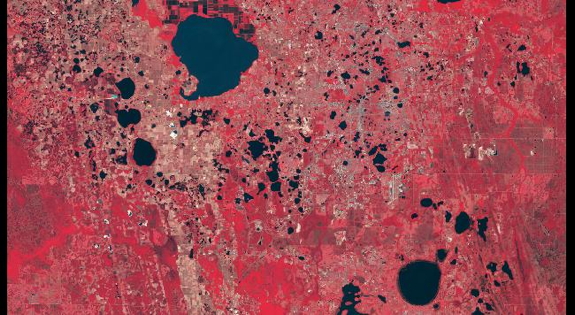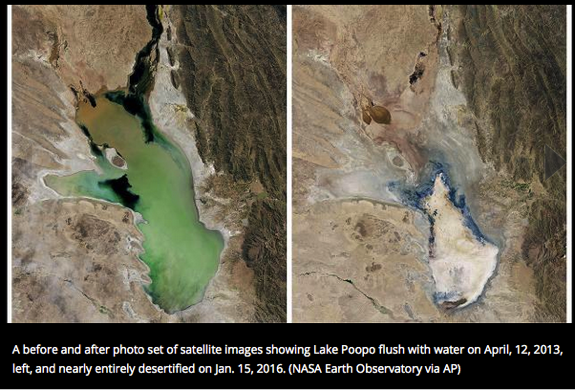
Enormous Lake In Bolivia Evaporates
January 26, 2016 - weather.com
by James Crugnale
One of Bolivia's most treasured natural resources, Lake Poopó, has dried up, stunning locals and devastating the ecology of the surrounding area.
Situated high in the Andes, Lake Poopó was once the country's second-largest lake, but a combination of environmental factors, including dry El Niño-fueled weather, overexploitation by mining, government mismanagement and changing climate patterns has left the area a desolate wasteland of deserted fishing vessels and dead marine life. The local government enacted a law last month that declared the site a "natural disaster," in an attempt to try to remedy the dire situation.
(below) Eight photos from inital gallery of photos in article -- rest of article follows photos.
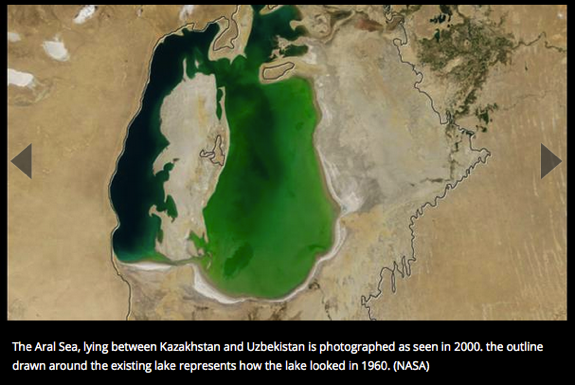

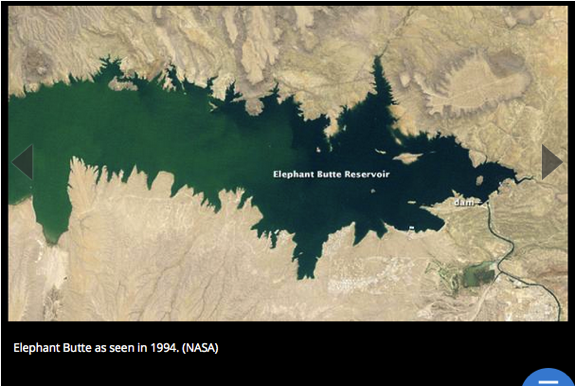
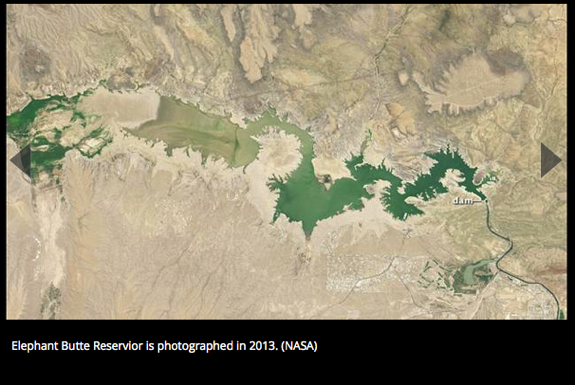
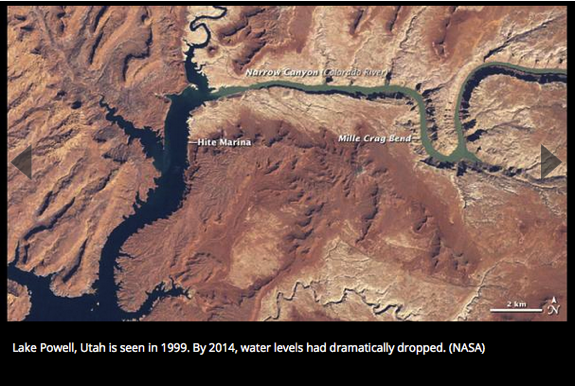
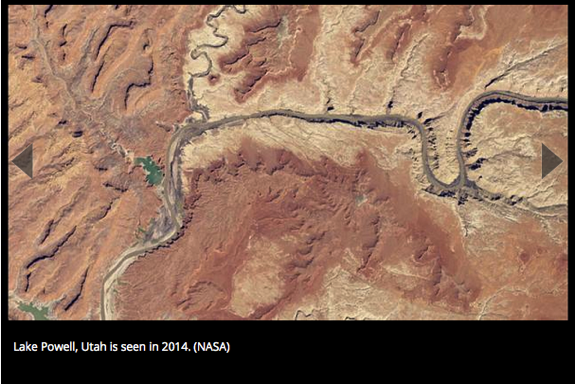


The consequences of the desiccated lake have been calamitous for wildlife. Reuters estimates that the death toll among fish has been "estimated in the millions" with hundreds of other birds like flamingos and ducks also killed off by the environmental disaster. The economy has also been severely impacted, as the nearby residents rely on fishing for food.
The lake's geographic location makes it extremely susceptible to small changes in the ecosystem of the basin.
"This seems to be a manifestation of El Niño drought," Bryan Mark, associate professor of Geography Byrd Polar and Climate Research Center at Ohio State University, told weather.com. "Strong El Ninos like we've experienced in 2015 are associated with dry conditions on the Altiplano [the Andean Plateau]."
The dried out remains of Lake Poopó in Bolivia is littered with abandoned boats. (Juan Karita/AP)
Mark Bush, a biology professor at Florida Institute of Technology who had studied the lake in 2010 and predicted it would eventually succumb to drought, explained to weather.com that the survival of Lake Poopó is reliant on being fed by a river flowing from Lake Titicaca.
"If Titicaca's level drops, water stops flowing over a sill at the southern end of the lake, and the southern Altiplano is starved of water," Bush said.
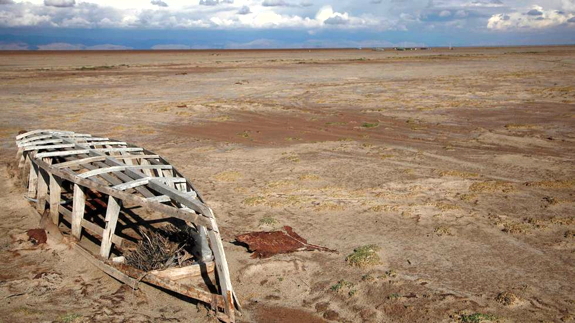
below) The dried out remains of Lake Poopó in Bolivia is littered with abandoned boats. (Juan Karita/AP)
"Lake Poopó is always going to be susceptible to this drying, and so I am sure that this kind of evaporation has happened many times before," he added. "What we showed, was that if temperatures rise 1-2 degrees C above (current temperatures), not only does Poopó dry out, but so too does most of Titicaca. There is then a positive feedback mechanism between falling lake level and reduced humidity that modifies the local climate."
Record melt rate from the Andes glaciers can also play a factor in the sustainability of the region's lakes.
Lonnie Thompson, a climate scientist at Ohio State University, told weather.com that the glaciers serve as "water insurance policies" during periods of severe drought.
"Many of the glaciers in Peru and Bolivia have passed a critical threshold such that their size is so small that their ability to provide melt is greatly diminished," Thompson said. "Hence glacier melt water fed lakes like Lake Titicaca and Lake Poopó also diminish in size, and in the case of Lake Poopó, can disappear."
He predicted it was possible, with shifting weather patterns, that the lake could rebound but believed it would remain dry in the near term.
"Strong El Niños are usually followed by strong La Niñas. La Niñas generally bring more rainfall than normal to southern Peru and Bolivia so it is possible that that Lake Poopó will reappear next year," he said. "We will have to wait to see, but in the long run, lakes like Lake Poopó will dry up and stay dry."
